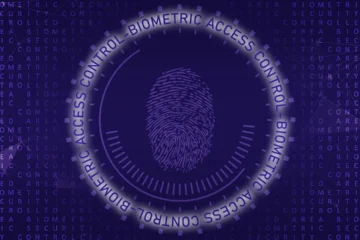Table of Contents
Digital Security

In our increasingly digital world, the benefits of technology and connectivity are undeniable. However, the rapid advancements in the digital realm have also given rise to an ever-evolving threat landscape. Cybercriminals continually adapt their tactics, seeking to exploit vulnerabilities in digital environments for financial gain, data theft, or disruption of critical infrastructure. In this blog, we will provide a comprehensive overview of the digital threat landscape, exploring the various cyber threats that individuals and businesses face and the importance of digital security in safeguarding against them.
Phishing Attacks
Phishing is still one of the most common cyber risks.Cybercriminals use deceptive emails, messages, or websites to trick users into divulging sensitive information, such as login credentials, financial details, or personal data. Phishing attacks target individuals and businesses alike, emphasizing the importance of security awareness and robust email filtering systems.
Ransomware
Ransomware is a sort of virus that encrypts the data of a victim, making it unavailable until a ransom is paid. These attacks can have devastating consequences for individuals and organizations, leading to data loss, financial extortion, and operational disruption. Effective data backups and real-time threat detection are essential in countering this threat.
Insider Threats
Insider threats originate from within an organization when employees or trusted individuals intentionally or unintentionally compromise security. These threats may include data theft, fraud, or sabotage. Implementing stringent access controls, conducting regular security training, and maintaining a healthy security culture are essential in mitigating insider risks.
Distributed Denial of Service (DDoS) Attacks
DDoS attacks overwhelm a target’s servers or networks, causing disruptions and downtime. These attacks can impact businesses, online services, or even critical infrastructure. Robust DDoS protection services and network traffic analysis can help mitigate the impact of such attacks.
Zero-Day Exploits
Zero-day exploits target unknown vulnerabilities in software before vendors release patches. Cybercriminals exploit this window of opportunity to gain unauthorized access to systems. Prompt patch management and threat intelligence are critical in reducing the risk posed by zero-day exploits.
Data Breaches
Data breaches involve unauthorized access to sensitive data, leading to potential leaks or theft. Breaches can result from inadequate security controls, third-party vulnerabilities, or even human error. Strong data encryption, multi-factor authentication, and data loss prevention (DLP) tools play a vital role in protecting against data breaches.
Conclusion
Understanding the digital threat landscape is paramount in building a robust and proactive digital security strategy. Cyber threats are constantly evolving, and no entity is immune from potential attacks. By recognizing the various threat vectors, individuals and businesses can take preventive measures to protect their digital assets, sensitive data, and critical infrastructure.
Digital security is not a one-time effort but a continuous process that requires vigilance, education, and the implementation of the right security measures. Emphasizing security awareness, conducting regular risk assessments, investing in advanced security technologies, and staying informed about emerging threats are essential practices in safeguarding against the ever-changing digital threat landscape.
In an interconnected world where cybersecurity challenges are constantly evolving, proactive digital security measures become the foundation of a resilient and secure digital future for individuals, businesses, and societies at large.



